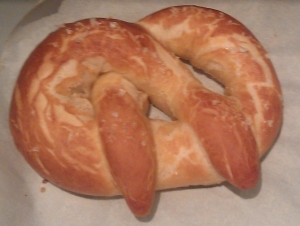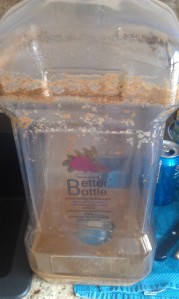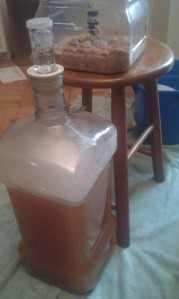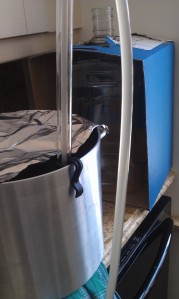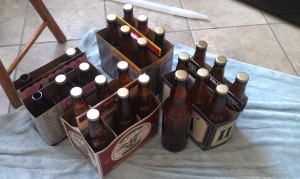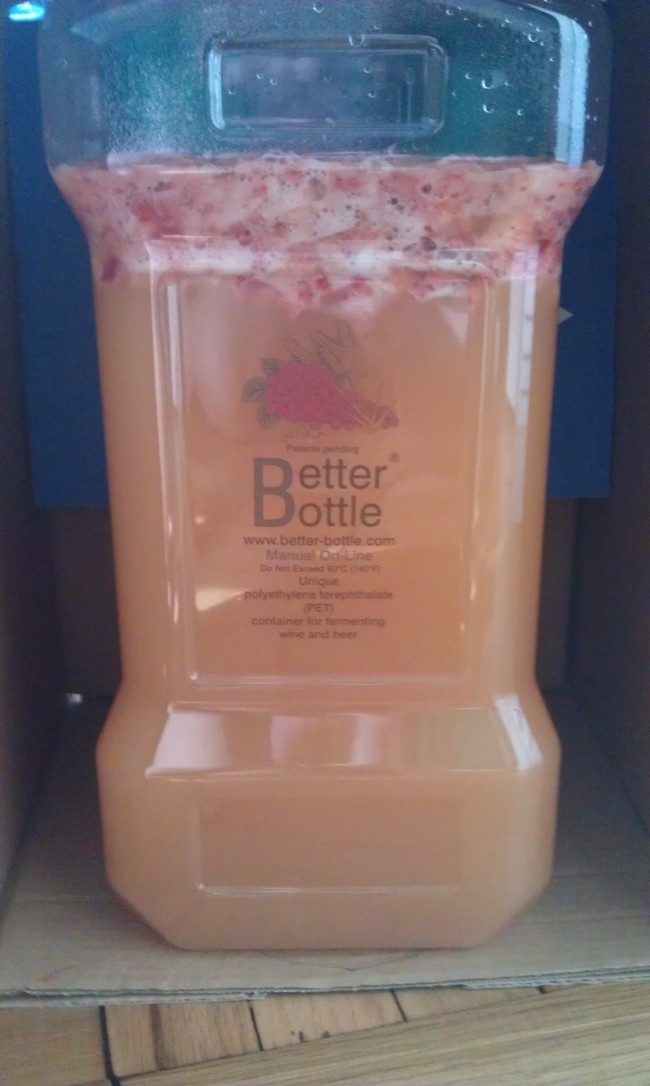This 750ml bottle was given to me as a gift recently and it was some very interesting stuff. I haven’t had many White IPAs so I can’t say that I’m an expert in this rather interesting style. From what I am led to believe, the White IPA is somewhat like a cross between a Belgian Witbier and a good old India Pale Ale. Sounds just about perfect to me as the weather is starting to get hot and humid. A nice wheat crispness is always a solid contribution to summertime brews. Then I saw the kicker on the front of the bottle… “Bottled with Brett”. This got me very interested. Bottle conditioned using wild yeast, this, I thought, was going to be different. The bottle also mentioned that it had wine yeast added and that it was aged in oak wine tanks. At this point I honestly didn’t know what I was in for. This beer was bottled in August 2012, so it has been bottle conditioning for almost a whole year. I had a feeling that this was going to have a lot of Brettanomyces characteristics and maybe not quite the hop bite that it would’ve had at an earlier date.
I popped this baby open and started to pour. I poured as slowly as I could, and yet I still got a full pint glass of head. This beer was extremely fizzy and that’s not a bad thing for a summer thirst quencher. I took a whiff and I was surprised at what I smelled. I can’t say I’ve had much of an introduction to Brett beers up to this point but it was unmistakable. An extremely funky, horse, barnyard, smell was overpowering the other aromas and I was already a bit scared to take a taste. As I gave it a little more of a whiff I could tell that there were some fruity notes under that heavy blanket of Brett aroma but it was hard for me to get past it. The taste was also extremely funky, much like the aroma but with a distinct wine note to it on the end. There’s definitely some fruity stuff going on as well, but once again the wild yeast is definitely front and center and it is hard to separate it from the other layers.
This beer is complex, and not very approachable. The other person that was tasting this with didn’t like it at all. I’ll admit that at first I wasn’t too sure I liked it much myself since I was unaccustomed to the funky aroma/taste that this beer had in spades, but as I drank it, it started to grow on me. I don’t think this would be a beer I’d drink all the time, but I would certainly love to taste a young batch and an older batch of this at the same time. I think not only would it be fun to see how much the overall flavor changed in that time, but also to see if it would be easier to pick out the other notes in the younger beer in order to have a better sense of those flavors underneath the Brettanomyces flavor in the older one.


